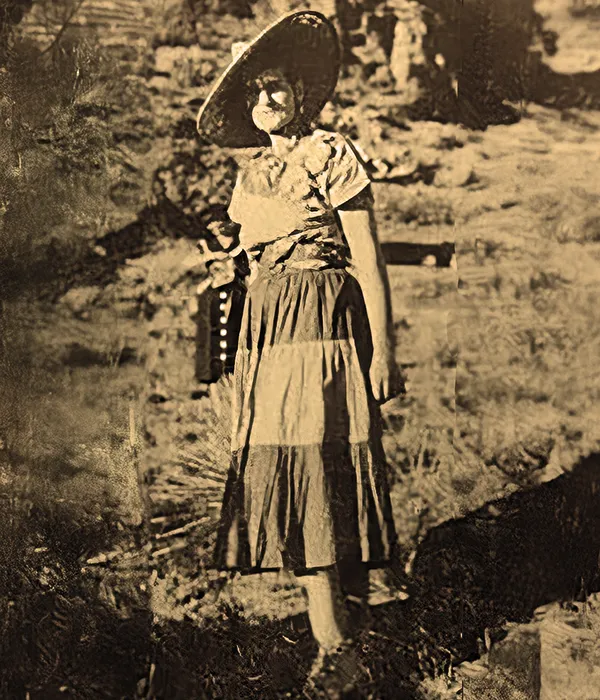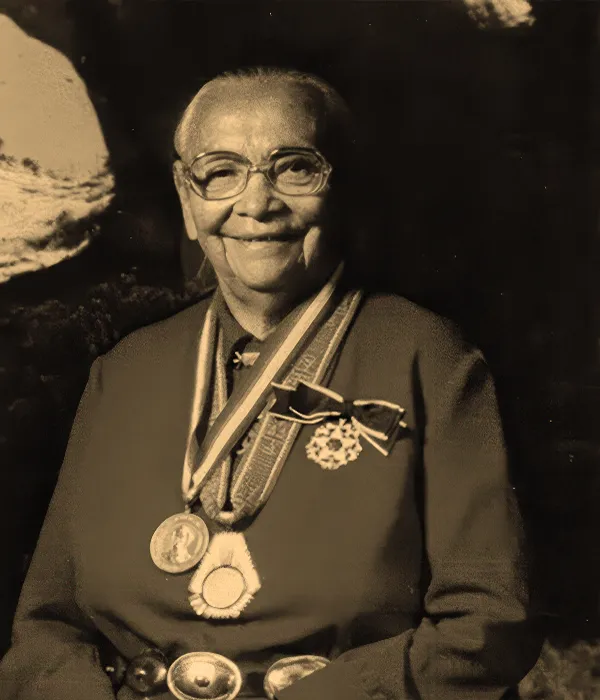

Fannie Gulick
Fanny “Fannie” Belle Gulick (1892–1963) was a brash trailblazer whose bold moves reshaped Sedona, Arizona. Born in Missouri, she built a fortune in Las Vegas running a “rooming house”—likely a brothel—famously quipping, “I’d give ’em a bed and I’d give ’em hell.” In the 1940s, she arrived in Sedona, then a quiet outpost, and snapped up 1,000 acres south of town, including Big Park. Her sharp wit and outsider’s grit stunned locals, but her land speculation paid off after her 1963 death, seeding the Village of Oak Creek—a modern hub of resorts and residents. Fanny’s audacity echoes in Sedona’s growth from frontier to destination. Want to uncover how this maverick turned red rock land into legacy? [Read More]

Marguerite Staude
Marguerite Brunswig Staude (1899–1988) left an indelible mark on Sedona, Arizona, with the Chapel of the Holy Cross, a stunning red rock landmark born from her artistic and spiritual vision. Raised in a wealthy Louisiana family, her passion for art grew through European travels and private schooling. In 1932, inspired by a cross-like illusion in the Empire State Building’s framework, the devout Catholic sculptor resolved to build a modern church. World War II halted her initial Budapest plans, but in Sedona, she found her calling. With her husband, she bought land in 1941, and after securing a forest permit with Senator Barry Goldwater’s help, she oversaw the chapel’s construction from 1955 to 1956. Costing $300,000, it blends faith, art, and nature. Curious about her journey from vision to reality? [Read More]

Annie Wauneka
Annie Dodge Wauneka (1910–1997) was a Navajo titan whose health crusade reshaped Northern Arizona, leaving a legacy celebrated in Sedona’s cultural tapestry. Born in a hogan near Sawmill, daughter of Navajo leader Henry Chee Dodge, she survived the 1918 flu epidemic at a Fort Defiance boarding school, sparking her public health passion. Elected to the Navajo Tribal Council in 1951 as its second woman, she fought tuberculosis, infant mortality, and poor sanitation across the reservation. With a degree from the University of Arizona, she blended Western medicine with Navajo traditions, driving a truck to deliver aid and broadcasting health tips in Navajo. Her work earned her the 1963 Presidential Medal of Freedom. Curious how her influence reached Sedona’s red rocks? [Read More]

Katie Lee
Katie Lee (1919–2017) was a dynamic force whose Sedona years wove her into the fabric of Arizona’s red rock country. Born in Illinois and raised in Tucson, this folk singer, actress, writer, and river runner found refuge in Sedona from 1969 to 1971, drawn by its wild beauty and artistic spirit. After a Hollywood stint and folk tours with Burl Ives, she recorded albums like Folk Songs and Poems of the Colorado River. Her love for the Southwest’s landscapes—sparked by Grand Canyon river trips—fueled her fierce activism against the Glen Canyon Dam. In Sedona, she performed, wrote, and embraced the stillness of Oak Creek Canyon before leaving for Jerome in 1971. Want to explore her journey from river rapids to red rocks? [Read More]

Dora Chavez Madrid
Dora Chavez Madrid (1922–2022) was a resilient daughter of Sedona’s Hispanic pioneer roots, her life weaving through Arizona’s red rock history. Born in Flagstaff to the Chavez clan—early Oak Creek Canyon settlers—she grew up amid ranching traditions. A WWII riveter on B-52s, she later became a cosmetologist and nurse, raising a family with husband Joseph Madrid. After his 2000 passing, she returned to Arizona, settling in Prescott near her ancestral Sedona ties, like Chavez Ranch Road. From the 1990s, she enriched the Sedona Heritage Museum with tales of early settlers, bridging past and present until her death at 99 in 2022. Her quiet strength shines in Sedona’s story—want to discover how she shaped its legacy? [Read More]